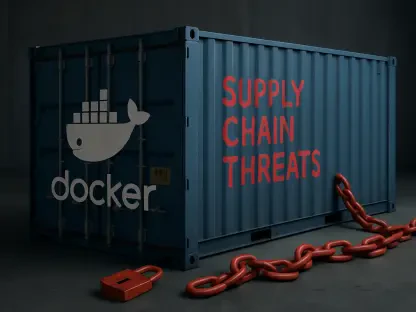The growing complexity of cloud environments, combined with inadequate training on securing these technologies, has led to an increased frequency of data breaches. Despite the improved availability and quality of security tools, many organizations continue to struggle with cloud security. A recent report by Tenable revealed that 74% of surveyed companies had exposed storage or other misconfigurations, providing a broad attack surface for cybercriminals. This highlights the urgent need for businesses to adopt strategic measures to simplify and enhance their cloud security protocols.
1. Implement Robust Access Controls
The foundation of any effective cloud security policy begins with robust access controls. Regularly inspecting and reviewing access keys is critical to ensuring that they are necessary and properly configured. This process involves assessing the permission levels associated with each key and verifying that they align with the actual needs of the designated users. By conducting these inspections frequently, organizations can significantly reduce the risk of unauthorized access stemming from outdated or overly permissive keys.
One best practice for managing access keys is to rotate them frequently. This practice involves generating new keys and decommissioning old ones, thereby limiting the window of opportunity for unauthorized use. Additionally, it’s important to remove any unused or unnecessary keys, which often linger in cloud environments long after they have outlived their usefulness. By eliminating these dormant access points, businesses can mitigate the risk of cyber infiltrations aiming to exploit stale credentials.
2. Enhance Identity and Access Management (IAM)
Strengthening Identity and Access Management (IAM) policies is another vital step in securing cloud infrastructure. Adhering to the principle of least privilege, where users are granted only the minimum level of access necessary to perform their job duties, can significantly reduce potential security risks. This approach limits the damage that can be inflicted in the event of a compromised account, as attackers will encounter fewer opportunities to exploit sensitive data or systems.
Role-based access controls (RBAC) are essential for enforcing this principle within cloud environments. By assigning roles based on job functions and mapping these to specific access permissions, organizations can ensure that users interact only with the resources pertinent to their responsibilities. This not only simplifies user management but also tightens security by restricting access pathways and minimizing the attack surface area. Fine-tuning IAM policies and integrating them with other security measures ensures a layered defense strategy.
3. Conduct Routine Security Audits and Penetration Testing
To maintain a secure cloud environment, ongoing security audits and penetration testing are indispensable. Regularly examining cloud setups allows organizations to identify and rectify vulnerabilities and misconfigurations before malicious actors can exploit them. These audits should be comprehensive, covering everything from network security to application integrity, and should assess the overall security posture of the organization.
Utilizing external organizations to conduct these assessments can provide an unbiased perspective on security readiness. These specialized firms possess expertise and methodologies that can uncover issues that in-house teams might overlook. Outsourcing security audits helps avoid conflicts of interest and ensures that evaluations are rigorous and objective. Furthermore, post-audit reports can offer actionable insights and recommendations for shoring up defenses, thereby bolstering the organization’s security framework.
4. Deploy Automated Monitoring and Incident Response Systems
Modern cloud security strategies must incorporate automated monitoring and incident response systems to be effective. Automated tools offer the advantage of continuous, real-time monitoring, essential for promptly detecting and mitigating security threats. These systems can track a wide array of security metrics, from unusual login patterns to data exfiltration attempts, providing a holistic view of the environment.
Incident response systems that can automatically react to certain types of security incidents are crucial for minimizing the response time between threat detection and mitigation. By leveraging these systems, organizations can swiftly contain breaches, preventing them from escalating further. Automated response mechanisms can include actions like isolating affected resources, revoking compromised credentials, and notifying security teams for further investigation. This proactive approach ensures that threats are addressed quickly and effectively, reducing potential damage.
5. Adopt Best Practices for Kubernetes
As Kubernetes environments gain popularity, they introduce unique security challenges that need to be addressed. One key best practice is to ensure that Kubernetes API servers are not publicly accessible unless absolutely necessary. Publicly exposed API servers can become hotbeds for attacks, making it essential to restrict access only to trusted users and networks.
Another important practice is to limit user permissions within Kubernetes environments. By applying the principle of least privilege, organizations can minimize potential attack vectors and reduce the likelihood of unauthorized access. Implementing Pod Security Standards (PSS) and network policies can further safeguard the environment by controlling the interactions between different components and restricting the flow of sensitive data. Regular audits of user permissions and access controls are necessary to maintain this secure posture.
6. Prioritize Vulnerability Management
Effective cloud security also hinges on a robust vulnerability management program. Regularly updating and patching all software and cloud services is crucial for defending against newly discovered weaknesses. Prioritizing these updates based on vulnerability severity ensures that critical issues are addressed promptly, minimizing the window of exposure.
Organizations should implement a structured patch management process that includes routine scans for vulnerabilities, timely deployment of patches, and verification of successful installation. This process should also account for third-party applications and services that are integral to the cloud environment. By staying ahead of potential threats through diligent vulnerability management, organizations can significantly bolster their overall security stance.
7. Strengthen Governance, Risk, and Compliance (GRC) Frameworks
A comprehensive Governance, Risk, and Compliance (GRC) framework is essential for maintaining robust cloud security. Continuous development and maintenance of GRC practices help assess and improve the effectiveness of security controls. This framework should encompass policy development, risk assessment, compliance tracking, and initiatives for continuous improvement.
Developing clear security policies and guidelines is the first step in establishing a strong GRC framework. These policies provide a roadmap for best practices and help ensure consistency across the organization. Regular risk assessments are also crucial, as they identify new and evolving threats that could impact the cloud environment. Compliance tracking ensures adherence to industry standards and regulatory requirements, while continuous improvement initiatives foster an adaptive and resilient security posture.
8. Train Employees on Security Awareness
The complexity of modern cloud environments, coupled with insufficient training on how to secure these technologies, has significantly contributed to a rise in data breaches. Though security tools have become more available and their quality has improved, many organizations find cloud security challenging. According to a recent Tenable report, 74% of surveyed companies had storage exposed or other misconfigurations, creating a broad attack surface for cybercriminals. This statistic highlights the urgent need for businesses to adopt strategic measures to simplify and enhance their cloud security protocols.
Cloud security is more critical than ever. As companies migrate more operations to the cloud, they must ensure they are adequately protected against potential cyber threats. The increasing sophistication of cyberattacks makes it essential for organizations to stay ahead by implementing robust security measures. Training and awareness programs can play a crucial role in equipping teams with the skills needed to manage cloud security effectively. With the right strategies and tools, businesses can significantly reduce their vulnerability and fortify their defenses against potential breaches.









